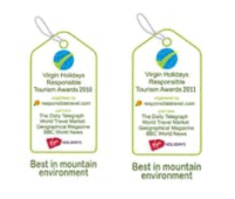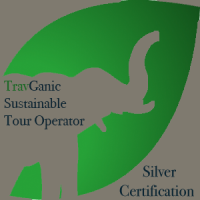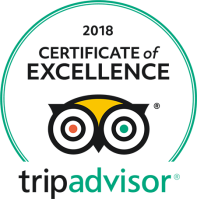Wellness Adventures in the Himalayas
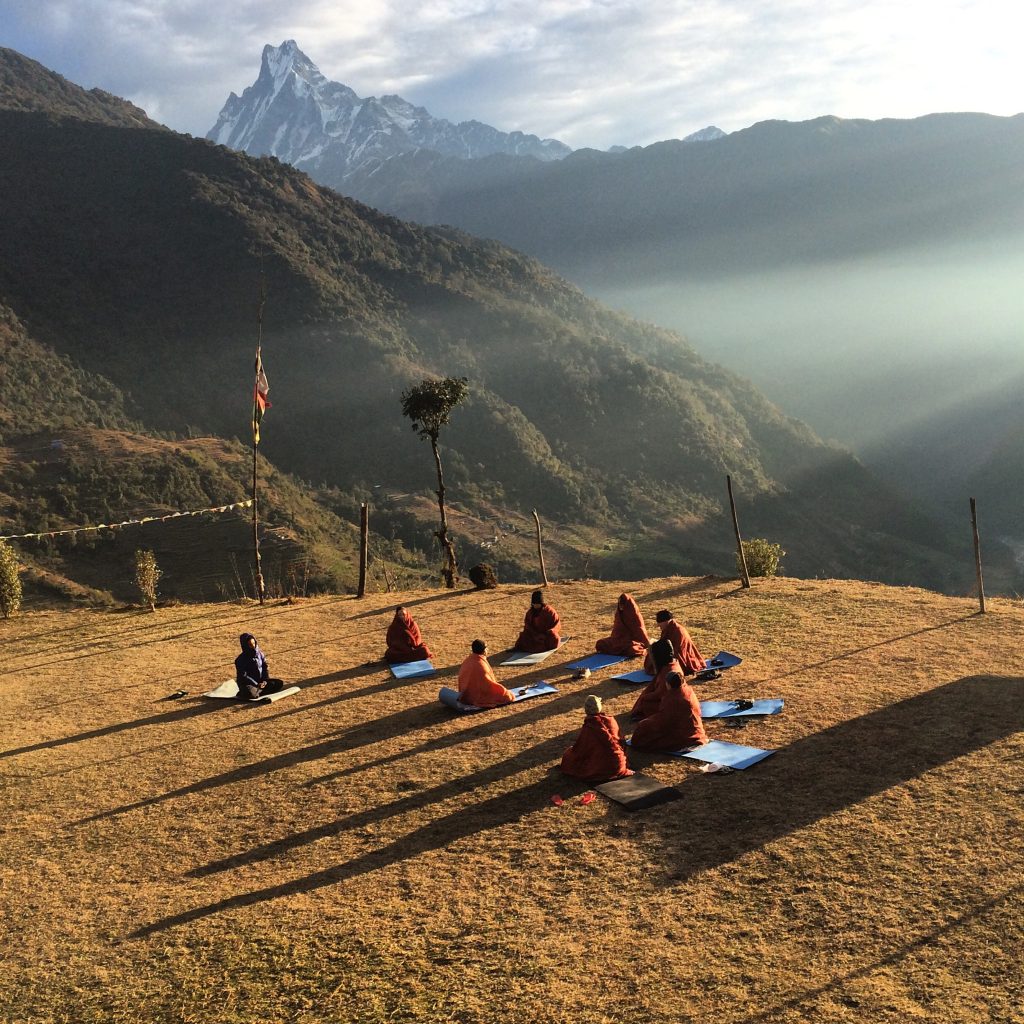
Wellness Adventures in the Himalayas Embark on a unique journey of Wellness Adventures in the Himalayas with a twist that sets it apart from traditional wellness experiences. At Responsible Adventures, we believe that true wellness goes beyond pampering at luxury spas and resorts. Our Wellness Treks offer a unique experience combining moderate to challenging hiking levels with mindful practices, nourishing food, and a deeper connection to the natural world. These treks are designed to be accessible to individuals with moderate fitness levels and can be tailored to accommodate different fitness levels. Our Wellness Treks provide a holistic experience that nurtures both body and mind. We move away from the commercialised view of wellness and focus on the fundamental elements that genuinely promote well-being. By immersing trekkers in the stunning landscapes of the Himalayas, we offer a unique chance to escape the pressures of modern life and rediscover what truly matters. Nutrition plays a crucial role in our Wellness Treks. Our trekking chefs, trained in high-altitude cooking and nutrition, use superfoods and nutrient-rich ingredients to ensure that meals are delicious and highly nourishing. This approach helps trekkers maintain energy, recover quickly, and acclimate to high altitudes. Our thoughtfully planned meals support overall health, proving that simple, wholesome food can be enjoyable and functional. The Himalayas provide an unparalleled setting for reconnecting with nature. Our treks take you far from the chaos of everyday life and immerse you in the serene beauty of the mountains. Trekkers are encouraged to slow down and absorb their surroundings through guided mindfulness practices, nature walks, and quiet reflection. This connection with nature helps reduce stress, sharpen mental clarity, and foster a deep sense of peace and gratitude. At the heart of our Wellness Treks is a return to basics. We ignore the excess and focus on the essentials: fresh air, physical activity, good company, and simple, nourishing food. By simplifying the experience, we create space for trekkers to reconnect with themselves and appreciate the fundamental joys of life that are often overlooked in the hustle of modern living. Wellness isn’t confined to luxury treatments; it’s a lifestyle. During our treks, we educate our clients on the broader concept of wellness—beyond the confines of upscale resorts and spas. We discuss the importance of balance, mindfulness, and connecting with nature as key elements of a healthy life. Our guides offer practical tips on integrating these principles into everyday routines, making wellness accessible and sustainable for everyone. Our treks are intentionally paced to allow for mindful hiking, enabling trekkers to connect with their surroundings and themselves. We incorporate moments of reflection, meditation, and breathing exercises, helping trekkers centre themselves and fully engage with the journey. This mindful approach turns the trek into a meditative experience, enhancing the sense of presence and connection. Wellness also means connection—both with oneself and others. Our Wellness Treks cultivate community among participants, creating a supportive environment where individuals can share experiences, learn from one another, and build meaningful connections. Trekking together, sharing meals, and participating in group mindfulness activities form bonds that often extend far beyond the trail. We aim to redefine the concept of luxury in wellness by highlighting the richness of simple, authentic experiences. The luxury we offer isn’t found in opulent accommodations or elaborate treatments but in the genuine, unfiltered experiences of nature and self-discovery. Our Wellness Treks are about finding joy in simplicity, embracing the raw beauty of the Himalayas, and experiencing the freedom that comes from disconnecting from the digital world and reconnecting with the real one. Wellness at Responsible Adventures goes beyond pampering; it’s about fostering a balanced lifestyle, reconnecting with nature, and rediscovering the basics. Combining hiking, nature, and mindful practices, we offer a transformative experience that touches the core of being truly well. Join us on a Wellness Trek and explore a different kind of luxury that rejuvenates body, mind, and spirit in the heart of the Himalayas.
Innovative, Responsible and Sustainable Trekking Adventures in the Himalayas and beyond
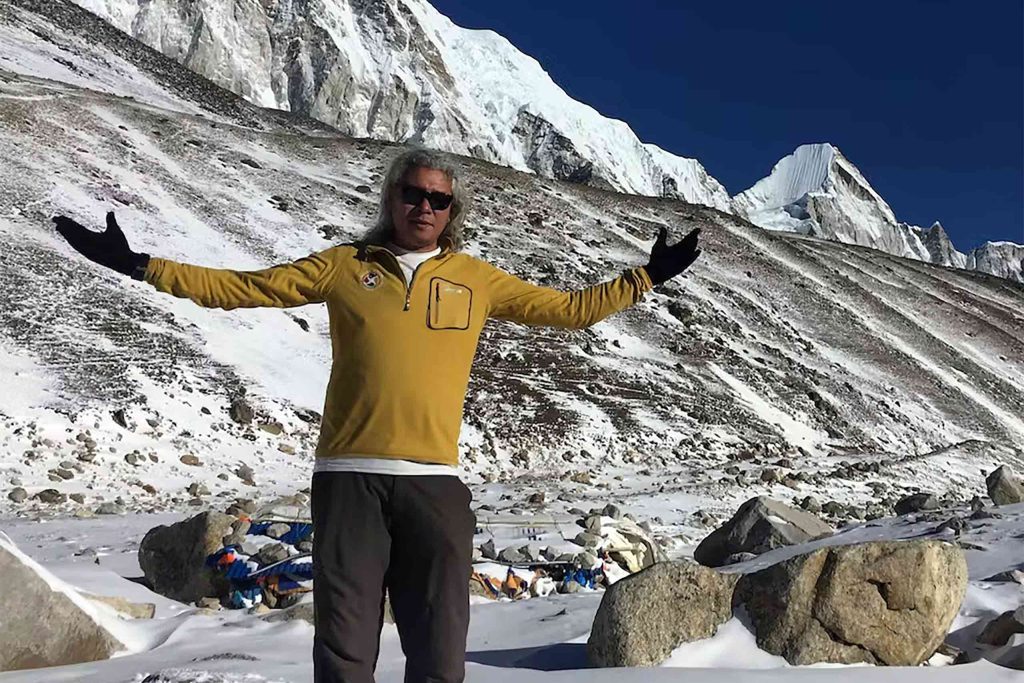
Innovative, Responsible and Sustainable Trekking Adventures in the Himalayas and beyond Raj Tamang is not just another trekking guide in the Himalayas—he’s a pioneer, a mentor, and a true advocate for responsible tourism and community empowerment. With decades of experience and a unique approach to guiding, Raj stands out among his peers for his dedication to creating meaningful, sustainable, and transformative trekking experiences. Here’s how Raj Tamang differs from other trekking guides and tour leaders in the Himalayas: 1. A Pioneer in Wellness Trekking He has redefined the trekking experience with his concept of Wellness Trekking. Unlike traditional treks focusing solely on the physical challenge, Raj incorporates wellness, mindfulness, and holistic health elements into the journey. He has trained trekking chefs to use superfoods and nutritious ingredients, ensuring that trekkers are well-fed and nourished to support acclimatisation and recovery. This innovative approach enhances the trekking experience, allowing trekkers to reconnect with nature and appreciate the journey on a deeper level. 2. Commitment to DEI and Empowerment He passionately advocates for diversity, equity, and inclusion (DEI) in Nepal and globally. He actively works to empower marginalised communities by providing fair employment opportunities and promoting the importance of DEI in every training session, workshop, and conversation he leads. Raj’s commitment to uplifting others sets him apart as a leader who truly cares about the people he works with and the communities he serves. His efforts go beyond trekking; they’re about making a lasting positive impact on society. 3. Extensive Training and Expertise Raj’s expertise extends far beyond the trails. He has trained numerous trekking guides and leaders for Responsible Adventures and other companies in Nepal, India, Pakistan, and Tanzania. He will be conducting training for adventure guides/leaders in Uzbekistan in 2025. His training programs include advanced wilderness first aid, leadership skills, and customer service, ensuring that the guides he trains are well-prepared to handle any situation on the trek. Raj’s dedication to excellence in guiding has set a high standard in the industry, making him a respected mentor and leader. 4. Personalised and Ethical Approach Unlike many guides who might take a more commercial approach, Raj is deeply involved in every aspect of his treks. He handpicks his support crew, ensuring they are treated with respect, paid fairly, and provided with the proper gear and training. Raj doesn’t subcontract others to select porters; he believes in building a team that shares his respect, care, and commitment values. This personalised approach ensures high standards and creates a close-knit, supportive environment for his team and trekkers. 5. Deep Cultural Insight and Storytelling Raj’s extensive knowledge of the Himalayan culture, history, and traditions adds a unique dimension to his treks. He is not just a guide but also a storyteller, sharing rich insights and local legends that bring the landscapes to life. His deep connection to the region allows trekkers to experience the Himalayas in a way that goes beyond the surface, offering a deeper understanding and appreciation of the people and places they encounter. 6. Dedication to Responsible and Sustainable Tourism As the founder of Responsible Adventures, he has built his company on sustainable and responsible tourism principles. He leads by example, minimising environmental impact, supporting local economies, and educating trekkers about the importance of protecting the natural and cultural heritage of the Himalayas. His commitment to sustainability is not just a business model; it’s a way of life that he passionately promotes at every opportunity. Responsible Adventures offers all fully carbon-neutral tours. The company works with Offset Alliance to offset the carbon emissions from all its trips, making the treks environmentally accountable. This commitment includes planting trees and adopting sustainable practices to ensure a minimal ecological footprint. Responsible Adventures’ founder, Raj Tamang, also integrates carbon-neutral travel into his personal journeys, aligning with the company’s broader mission of promoting sustainability in tourism. 7. A Personal Touch and Genuine Care What truly sets Raj apart is his genuine care for the well-being of his trekkers and team. He goes above and beyond to ensure everyone feels supported, valued, and safe throughout the journey. His leadership style is characterised by empathy, attentiveness, and a personal touch, making every trek feel like a shared adventure among friends. Raj’s ability to connect with people personally creates an inclusive and encouraging environment where everyone can thrive. 8. A Visionary with a Global Impact Raj’s influence extends beyond the Himalayas. His vision for responsible tourism and community empowerment has taken him around the world, where he continues to spread the importance of DEI and ethical practices in the tourism industry. Raj’s work has inspired many to rethink their approach to travel and guiding, making him not just a leader in the Himalayas but a global ambassador for positive change in the trekking community. 9. Ultra High-end Adventures in the Himalayas. It’s a common belief that only the ultra-rich can travel on their private jets. However, many people don’t realise that regardless of wealth or aircraft sophistication, pilots must be qualified to land or take off at high altitudes and narrow valleys of destinations like Leh, Ladakh, Paro, and Kathmandu. These qualifications are not just a formality but a crucial aspect of flying. Understanding this can make you more informed and knowledgeable about the aviation industry. Raj can hire small private jets managed by qualified pilots to fly in and out of destinations such as Leh, Paro, and Kathmandu. He can design a private jet and helicopter tour to see the highest peaks in Ladakh, Bhutan, Nepal, and Pakistan.” Raj Tamang is available for hire to lead private groups on unforgettable trekking adventures across the Himalayas and beyond. With over three decades of experience, Raj has led numerous treks through challenging terrains in Nepal, Tibet, Bhutan, and India. He also has international expertise, having recently guided a group of Singaporeans to the summit of Mount Kilimanjaro in Tanzania. Known for his personalised approach and
The mental health benefits of a cycling holiday

The mental health benefits of a cycling holiday Photo by Sunil Chandra Sharma on Unsplash It’s well known that exercise of any kind can be hugely beneficial for both your physical and mental health. Going on holiday in itself is greatly beneficial to our mental health, but when paired with this exhilarating sport you create a powerful healthy effect. Feeling the wind on your body as you speed down a hill, or the burn in your legs as you climb a mountain, just feels incredible. As an added bonus, cycling holidays are a very sustainable way to enjoy a well deserved break. If you’re looking for ways to reduce the carbon footprint of your holiday, loading your bikes and heading out to explore new horizons is a great option. Throughout this article, we will look at three big ways cycling can positively impact your mental health. Boost your mood There is no doubt about it. Just as runners get a “runner’s high”, cyclists get their cousin, the “cycling high”. This is one of the main reasons a lot of people take up cycling in the first place, and subsequently embark on international cycling adventures. It becomes a positive addiction. Cycling helps to pump blood quickly around your body, leading to a rapid release of endorphins and other happy hormones like dopamine, norepinephrine and serotonin. A holiday of any description has the power to take our minds away from the toils of daily life. But having an activity to focus on, such as cycling, is a great way to travel more mindfully and stay in the present moment. This can help to focus your mind on more positive thoughts, relieving stress and boosting your mood. Not to mention, if you’re the type of traveller who enjoys exploring the local area and engaging with different cultures when on holiday, cycling is a great way to see more than you might be able to on foot. Just hopping on your saddle and taking in the sights and sounds of a new destination does wonders for both your physical and mental health. Sleep more soundly If your circadian rhythm is out of whack, you’re not likely to be sleeping as well as you should. And it’s been proven that cycling regularly can help to synchronise your circadian rhythm. This, in turn, helps to lower your levels of stress hormones, which can make getting a good night’s sleep easier. In a similar way, exercise (when performed at certain times of the day) has also been shown to help our body clocks to realign with the new surroundings when travelling to a different time zone. You don’t have to take on a cycling marathon each day of your holiday to feel the benefits, either. Even a short ride each day will provide several benefits to your sleep health, helping you to wake up each day more refreshed and ready for another tour on two wheels.With its stress-busting and brain-building benefits, cycling is the perfect accompaniment for a holiday. Meet new people Everyone knows that cycling, or doing any exercise for that matter, is always more fun when you share the experience with others. Whether you’re with friends, in a group, or with family, coming together with like-minded people can improve your mental health to no end. A lot of cyclists choose to combine their passion with a holiday, and there are a number of guided road cycling holidays in France, Italy, and Spain. Some road cycling holidays are not for the faint-hearted though, so be sure to check before you book. For solo travellers, a cycling holiday is a great opportunity to meet new people who also enjoy exploring on two wheels. When it comes to family holidays, the kids are sure to love whizzing around on their bikes with their new friends, and it can be a great way to create lifelong memories. As you can see, there are plenty of ways that a cycling holiday can boost your mental health, as well as providing immeasurable benefits to multiple other aspects of your life. Remember to always run your bikes through a safety check before you set off, and research your route ahead of time to ensure it isn’t going to be too challenging if you have kids in tow.
Top Tips for being a Responsible Hiker
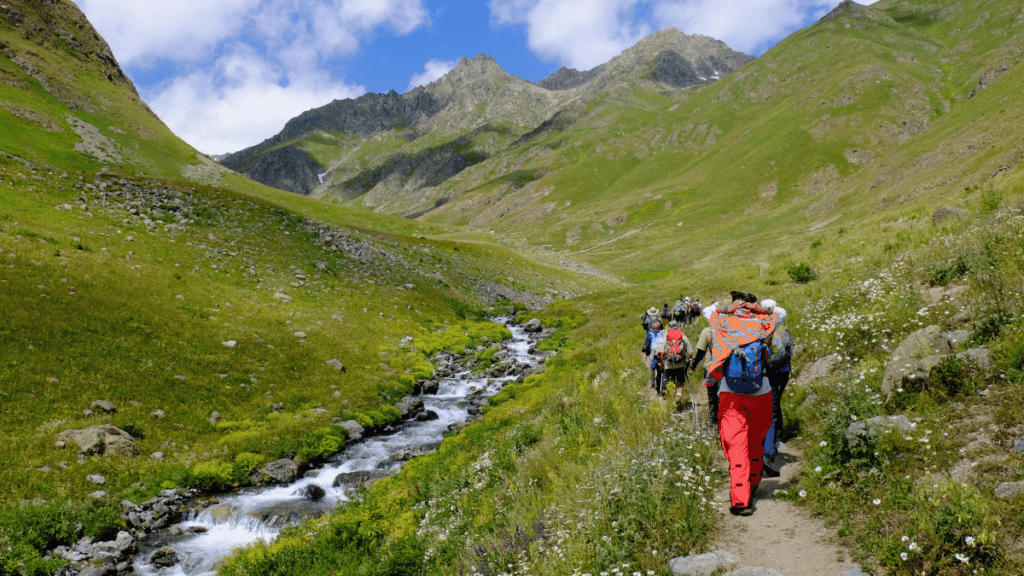
Top Tips for being a Responsible Hiker Many of us plan holidays to experience new corners of the world, and what better way to do that than exploring the local area on foot? With so many incredible hiking trails to discover, it’s no wonder that many people visit the beautiful sites in person. However, as a hiker, you must ensure that you’re respecting the local area. Irresponsible hikers can harm the local environment and the community, so trying to minimise your impact as much as possible is essential. Keep reading for helpful tips to ensure you sustainably enjoy your next hike. Limit single-use products Before you rush into your next adventure, ensure you’re appropriately prepared. This means bringing all the equipment you could need for your hike, including a reusable water bottle, to reduce the waste you produce. Disposable plastic water bottles are a common issue, particularly where hiking trails are concerned. Although drinking plenty of water on a hike is essential, plastic water bottles are not the answer. Many hiking trails are becoming littered with them, threatening the local wildlife. Instead, bring a large bottle with you and refill it at the designated points, or use a bottle with a filter and drink straight from any approved streams or rivers nearby. Take your rubbish with you. Some products will inevitably produce some waste, such as snack wrappers or cigarettes, but resist the temptation to discard them on the trail. As with plastic bottles, wrappers can not only become an eyesore in an otherwise beautiful area, but they can also harm the local wildlife. Ensure you bring any rubbish off the trail instead, where it can be disposed of appropriately. It is even better if recycling facilities are available, further reducing your impact. Don’t interact with wildlife. Hiking trails are often located in areas with unique wildlife, making them particularly attractive locations. However, these ecosystems are fragile, so it’s essential to be mindful of the impact we can have. Please resist the temptation to feed any of the creatures you encounter, as it can disrupt the food chain, leading to population changes and potentially endangering other wildlife. Similarly, don’t touch any local wildlife. Although they may seem harmless, touching them can present a danger to both the animal and you. Being a responsible hiker is about treating the areas you visit with the same respect that you would your home. These stunning locations should be protected from harm, kept clean and left as they were found to ensure that future generations can enjoy them as we do. Not only that, but it’s essential to respect the local community during your visit. After all, they live there year-round; the least we can do is preserve the beautiful trails during our visits.
Top Tips for A Comfortable Downhill Hike.
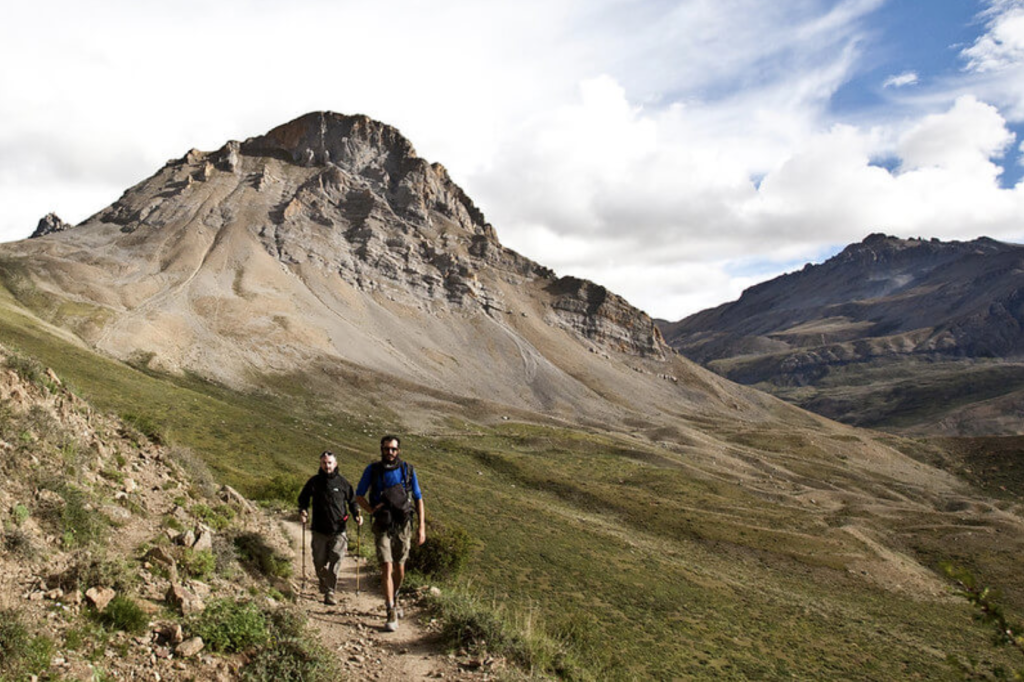
Top Tips for A Comfortable Downhill Hike. Top Tips for A Comfortable Downhill Hike | responsibleadventures.com Hiking uphill is entirely different from walking downhill in terms of hiking technique. While trekking uphill certainly comes with challenges and risks, hiking downhill perhaps comes with twice as many since slips and falls are more likely to happen while moving downward. However, hiking downhill can be rewarding, too, since it requires less energy than uphill hiking. It can also give hikers more time to enjoy their surroundings, a lot like Reese Witherspoon in Wild on Prime Video. You can easily prevent slips and injuries by correctly checking your hiking equipment and walking. Here are more tips to ensure a comfortable downhill hike: 1. Tighten Your Equipment Beforehand The last thing any hiker wants to do is stop to tie their shoes while making a tricky descent. To avoid this, check your equipment before starting your descent. Not only will you want to tighten your boots, but you will also want to tighten any hip or shoulder straps if you use descent ropes. 2. Invest in Good Trek Poles A hiker’s joints are under at least three times more stress during descents than ascents. To relieve some of this joint pressure, you can use trek poles, which take some of the weight off your legs while walking. Trek poles also help hikers maintain their balance by adding two more points of contact with the ground for them to rely on. No matter what kind of trek poles you invest in, adjust them to a comfortable height before you begin walking with them. 3. Hike with Proper Posture One of the best ways any hiker can avoid falling during descents is by walking with good posture. A good posture for downhill hikes does not lean forward or backwards; your back should be as straight as possible to keep your balance centred. You may also benefit from using bent knees while walking downhill to help keep yourself centred on your feet. 4. Use Zigzag and Plunge Step Techniques Zigzagging and plunge stepping are two techniques that can help hikers move downward along any terrain. Zigzagging involves a hiker moving downhill in a side-to-side walking path, and this allows the hiker to gain the traction needed to descend slowly. Plunge stepping consists of a hiker walking straight downhill with the heel leading first and the knees deeply bent. Plunge steps help hikers dig their shoes into slick terrains like snow or mud. Plunge steps, however, do not help hikers gain much traction on slick rocks. 5. Hike Distanced from Other Hikers If you are hiking in a group, it’s essential to maintain a reasonable distance between you and others while hiking downhill. If you walk too close to others, one slip can injure two or more people. A good rule of thumb is walking with two body lengths between each person in a group. 6. Use the Glissading Technique Carefully Glissading in hiking is known as sliding downhill on one’s bottom. Glissading can be helpful when descending a steep inclination of snow or sand; however, it should only be used when the end of the path is visible and when there are no rocks or crevices along the trail. To perform a safe glissade downhill, keep your body low to the ground, and let yourself slide slowly along the path you plan to take. You can use trek poles or an ice axe to control your speed by dragging them in the snow or sand as you descend. You should also never perform a glissade while wearing crampons or microspike shoes since they can get caught in the terrain. Summary While downhill hiking may be the most rewarding, it comes with fall and injury risks. To make your downhill hike easier, prep your equipment beforehand and use techniques like zigzagging, plunge stepping, and glissading as necessary.
Making Memories: Unique Birthday Celebration Ideas for Nepal Adventure Travellers
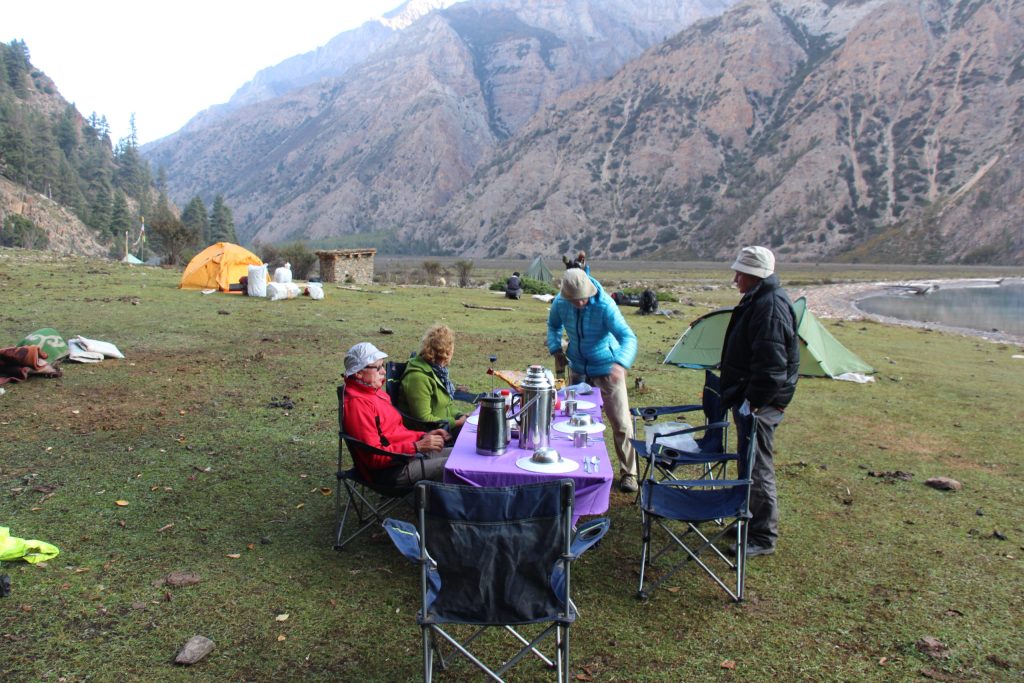
Making Memories: Unique Birthday Celebration Ideas for Nepal Adventure Travellers Birthdays are a special occasion for everyone, but what’s more remarkable is uniquely celebrating your birthday. If you’re an adventure traveller in Nepal, you’re in luck! Nepal is home to some of the most beautiful and adventurous destinations in the world, and what better way to celebrate your birthday than by exploring them? In this article, we will share some unique birthday celebration ideas for adventure travellers in Nepal. Tips for Planning a Safe and Fun Birthday Celebration Before we dive into the destinations, here are some tips to keep in mind when planning your birthday celebration in Nepal: Plan ahead: Nepal is a popular destination for adventure travellers, so planning and booking your activities in advance is essential to avoid disappointment. Dress appropriately: Nepal has a diverse climate, so check the weather forecast before you go and dress appropriately. Stay hydrated: The high altitude and physical activities can take a toll on your body, so drink plenty of water to stay hydrated. Respect the culture: Nepal is a culturally rich country, and it’s important to respect its customs and traditions. Follow safety measures: Adventure activities come with some risks, so ensure you follow all safety measures and instructions your guides give. Top Adventure Destinations to Celebrate Your Birthday in Nepal Trekking in the Annapurna region: Trekking in the Annapurna Circuit is one of Nepal’s most popular adventure activities. The trek offers breathtaking views of the Annapurna range and takes you through diverse landscapes, including lush forests, picturesque villages, and high-altitude deserts. You can celebrate your birthday in one of the tea houses along the trail, where you can enjoy a warm meal and a slice of cake. White-water rafting in the Trishuli River: White-water rafting in the Trishuli River is a thrilling adventure to pump your adrenaline. The river has rapids ranging from grade 2 to 4, making it suitable for beginners and experienced rafters. You can celebrate your birthday by camping on the riverbank, enjoying a bonfire, and stargazing. Paragliding in Pokhara: Paragliding in Pokhara is a popular adventure activity that offers breathtaking views of the Himalayas and the Phewa Lake. You can celebrate your birthday by taking a tandem paragliding flight with an experienced pilot and enjoying a bird’s eye view of the city. Bungee jumping in Bhotekoshi: Bungee jumping in Bhotekoshi is not for the faint-hearted. The 160-meter drop from a suspension bridge over the Bhotekoshi River will surely give you an adrenaline rush. You can celebrate your birthday by taking the plunge and enjoying a well-deserved drink at the on-site bar. Mountain biking in Kathmandu Valley: Exploring Kathmandu Valley on a mountain bike is a thrilling and exciting way to discover hidden gems and lesser-known trails. It could be a grand birthday celebration with friends, but always prioritize safety by wearing a helmet and adhering to safety guidelines. In addition to mountain bikes, you can rent mountain bikes to explore remote areas that are not easily accessible by car or public transportation. Family-Friendly Activities to Enjoy in Nepal: Ideas for Kids and Parents If you’re travelling with children, there are plenty of family-friendly activities in Nepal. Here are some ideas: Visit a wildlife sanctuary: Nepal has incredible wildlife, including tigers, rhinos, and elephants. You can take your kids on a safari tour in Chitwan National Park or Bardia National Park and get up close to these magnificent animals. Take a cultural tour: Nepal is rich in culture and history, and a tour of some of the country’s most important cultural sites can be a great way to educate your children. You can visit UNESCO World Heritage Sites like Kathmandu Durbar Square, Swayambhunath Stupa, and Boudhanath Stupa. Participate in a cooking class: Nepal has a rich culinary tradition, and participating in a cooking class can be a fun and educational activity for kids. They can learn how to make momos, dal bhat, and other traditional Nepali dishes. Visit a local market: Visiting a local market is a great way to expose your kids to different cultures and traditions. They can see how locals shop for groceries, try different foods, and interact with locals. If you’re searching for a fun and unique way to celebrate your kid’s birthday, you can contact us via email. We will make your birthday celebration even more exciting and memorable. Safety measures: Adventure activities come with some risks, but you can minimize them by following all safety measures and instructions from your guides. Here are some safety measures to keep in mind when participating in adventure activities in Nepal: Wear appropriate gear: Make sure you wear proper equipment for the activity you’re participating in, including helmets, harnesses, and life jackets. Listen to your guides: Your guides are experienced professionals who know the terrain and the risks involved. Make sure you listen to their instructions and follow them. Stay hydrated: The high altitude and physical activities can take a toll on your body, so drink plenty of water to stay hydrated. Know your limits: Adventure activities can be physically demanding, so it’s essential to know your limits and not push yourself too hard. Stay alert: Always be aware of your surroundings and potential hazards, such as uneven terrain or changing weather conditions. Equipment quality: We ensure all equipment is adequately maintained and in good working order before participating in any adventure activity. Choose reputable operators: When choosing operators for adventure activities, ensure they are reputable and have proper licenses and certifications. Celebrating your birthday in Nepal can be a unique and unforgettable experience. Plenty of adventurous activities exist, whether trekking in the Himalayan villages or white-water rafting in the Trishuli River. However, planning, dressing appropriately, staying hydrated, respecting the culture, and following all safety measures are essential. With these tips and destinations in mind, you’ll have a birthday celebration you’ll remember for years. So pack your bags, grab your friends, and prepare to make unforgettable memories in Nepal!
Sustainable Luxury Travel and Exclusive Local Experiences
Sustainable Luxury Travel and Exclusive Local Experiences Luxury travel was once associated with excesses like dancing and drinking in nightclubs until dawn, sleeping until noon with the air conditioning on full blast, and eating expensive dinners with imported food from around the world. Doubtlessly, some people will still partake in such activities, but more travellers have started to consider what effect their holidays will have on the environment. Just as many consumers have changed their habits with clothing, energy usage, and their own homes to reduce their carbon footprint, they crave travel in the same manner. Enter the world of sustainable luxury holidays. What is Sustainable Luxury? Sustainable luxury goes beyond reusing fluffy towels and turning off the air and lights when you leave your holiday residence. Of course, it involves travelling to your destination in the most environmentally friendly way, but once there, an eco-resort, eco-hotel, and eco-adventure experience should consider the local environment, economy, and culture when staffing and choosing furnishings. It’s also about local food made famous by the late Anthony Bourdain’s travel shows and newer offerings like One World Kitchen (streaming on fuboTV). Local products, food, and culture work together to produce a sustainable luxury experience. What to Look for When Finding Sustainable Luxury Options A sustainable hotel starts with a sustainable building. The materials and architecture used should reflect energy conservation, while any renovations should also incorporate eco-friendly materials. Look for the property’s commitment to sustainability on its website. However, sustainability also means delivering the luxury experience with the least damaging environmental effects. Look for the following characteristics: Room amenities like water carafes, bedding from local artisans, organic toiletries, and designer recycled writing pads Local culture on display through wall art, sculptures, etc., plus craft and cooking classes Hiring staff locally Organized trips to local food markets and native artisans Locally sourced sustainable foods in facility restaurants
Three of Nepal’s must-try hiking trails
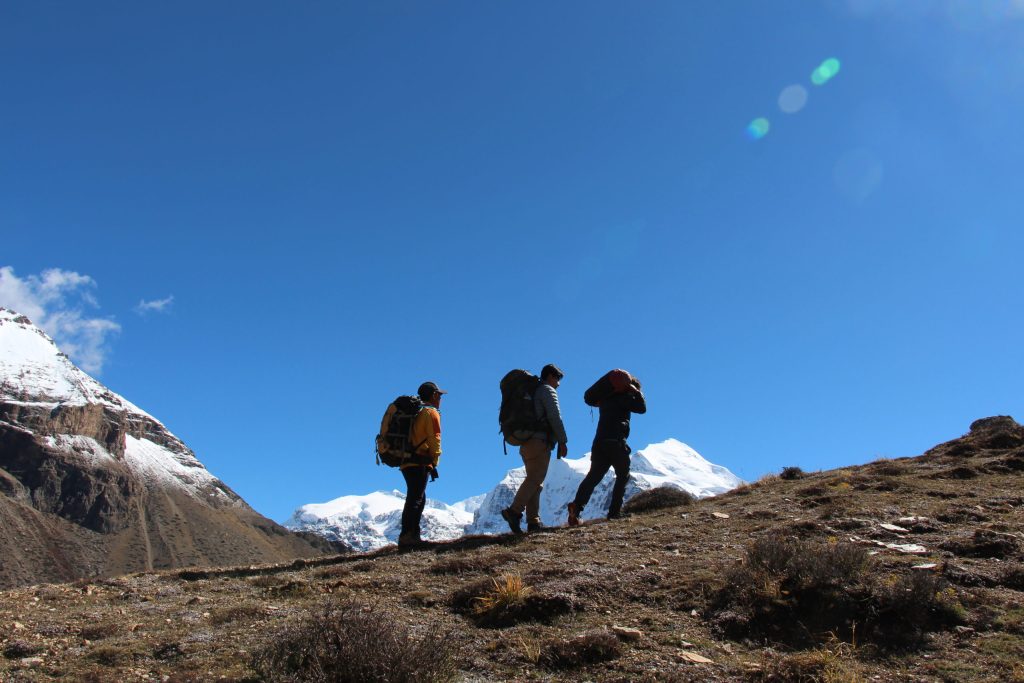
Three of Nepal’s must-try hiking trails According to one American study, over 50% of people cited their top reason for wanting to travel as learning something new about a place, history or culture. So, what better way to tick those boxes than by integrating with the locals on one of Nepal’s many beautiful trekking trails? Arguably most famed for its imposing mountain ranges, Nepal is a global hiking hotspot. With eight of the world’s ten highest mountains situated in this landlocked South Asian nation, there’s no wonder that Nepal has gained such a positive reputation amongst the hiking community. If you’re a novice in hiking, don’t let Nepal’s perilous peaks put you off from visiting the country. There are plenty of routes further off the beaten track which can invoke a similarly awe-inspiring reaction as the more gruelling ones throughout the Himalayas’ hotspots. So take a look at three of Nepal’s lesser-known trails – they should certainly feature on your hiking bucket list. Panchase trek The Panchase trek is the perfect option for the more inexperienced hiker looking to get an authentic feel for Nepal’s culture and lifestyle. This relatively easy 26-mile trek takes around three to four days to complete and passes through traditional Nepali villages, where conveniently situated tea houses can provide some welcome respite. You will also explore the protected forests of Panchase, which contain over 100 species of orchids, so keep an eye out for the beautiful flora in this area. Experts suggest that the Panchase Trek suits every travelling party, from families with young children to elderly hikers. Whilst other trekking options will take you to far higher altitudes, the views from the summit of Panchase Hill are genuinely spectacular, offering panoramas of the snowy Himalayan peaks. Upper Dolpo trek Situated in one of the most remote regions in Nepal, the Upper Dolpo trek is rarely attempted by tourists. This is due to the cost and difficulty attached to getting to the region, but once there, it is widely believed to be one of the country’s most beautiful hiking trails. Due to a series of steep ascents and a lack of tourist infrastructure. The challenging trail is only made more difficult by the lack of accommodation, meaning any walkers will likely need to camp for the duration of the expedition. Highlights include views over the spectacular turquoise water of Phoksundo Lake, which will be seen relatively early on in your journey. Another factor making Upper Dolpo unique is the opportunity to spot snow leopards in Shey Phoksundo National Park – one of Nepal’s eight suggested snow leopards. Kanchenjunga trek When you think of the tallest mountains in the world, you will likely think of names like Everest and K2. But did you know that Kanchenjunga in the Himalayas comes in as the world’s third-tallest peak? Being in such proximity to Everest, this 8,586m-high mountain can often be overlooked by tourists. Still, the less frequently trodden Kanchenjunga Circuit offers all the ingredients for a memorable hiking experience. This lengthy walk will test but truly reward any visiting hikers, from stunning vistas to a glaciated base camp on the mountain. The trail stretches 220km and will take approximately 21 days to complete. As a result, it is recommended that any visitors looking to take on this particular hike have a decent fitness level. In addition, this route will be particularly appealing to nature lovers, as the changing landscapes attract a vast range of flora and fauna for you to appreciate on your travels. You can have a tailor-made adventure in this region By Geoff Aldis, Freelance Content producer and Researcher
Partnership of LGBTQ+ Tour Operators and Nepal Adventure Travel Company
Partnership of LGBTQ+ Tour Operators and Nepal Adventure Travel Company Responsible Adventures Boutique trekking with a unique culinary experience for all genders and age groups. LET’S WORK TOGETHER At Responsible Adventures, a leading adventure company in Nepal, we seek professional partners to offer unique adventure tours to the LGBTQ+ community. We have had great success in the past with ‘women only’ tours and know that everyone enjoys these tours being with like-minded people. We also add a unique twist to our tours, with a specialist chef accompanying each tour, creating gastronomic delights at the end of each day. Special dietary requirements are catered for. During webinars and interviews, John Tanzella mentioned that the LGBTQ+ community would lead the way when tourism restarts and the rest follow! We have learned that 99% of the LGBTQ+ Tour operators and Travel Advisors don’t offer Trekking Adventure vacations. This is lost revenue for both of us. With a solid professional partnership, we can offer Adventure vacations to your clientele who would otherwise book with non-LGBTQ or Ally tour companies. What we offer We specialize in off-the-beaten-path treks that are not overcrowded with tourists (there are only known to very few trekking companies) We provide an innovative culinary service using nutritious and locally produced ingredients. Also, we serve the most varied and healthiest meals in the Himalayas. We aim to bring LGBTQ+ customers to beautiful and exotic locations and let them experience the culture. Here is our travel guide for LGBTQ+ Travellers to Nepal Responsible Adventures is a leader in innovative boutique adventure tours that are ‘Out-of-the-box’ unparalleled lifetime experiences. We have pioneered luxury mobile camping and culinary trekking adventures in the Himalayas. We strive to provide our customers with a successful and adventurous journey. Be assured of an upgraded service with the utmost attention to detail, a step above a traditional adventure holiday. What are we looking for We are looking for a tour company willing to partner with an eco-friendly company like ours and give the LGBTQ+ community an option to visit the Himalayas and other attractions in Nepal. Trekking is for everyone! We have handled trekkers from the age range of 3 to 77 years old! And if you don’t feel like trekking, there are options like wellness, yoga or an exciting chartered helicopter flight to the Himalayas. We are eco-friendly and sustainable, with a solid commitment to empowering marginalized communities. As part of this commitment, we provide a complimentary one-hour “Trekkers’ massage” by visually impaired masseuses at the end of each trekking package. Let’s join hands and provide your clients with unmatched trekking adventures in style. Let’s kickstart tourism together. The reopening of tourism brings a tremendous opportunity for us both. People of all ages and genders will get to travel again, and we want to be in the centre of it. We are Allies and members of the IGLTA.
Helpful tips for the first time trekker in Nepal
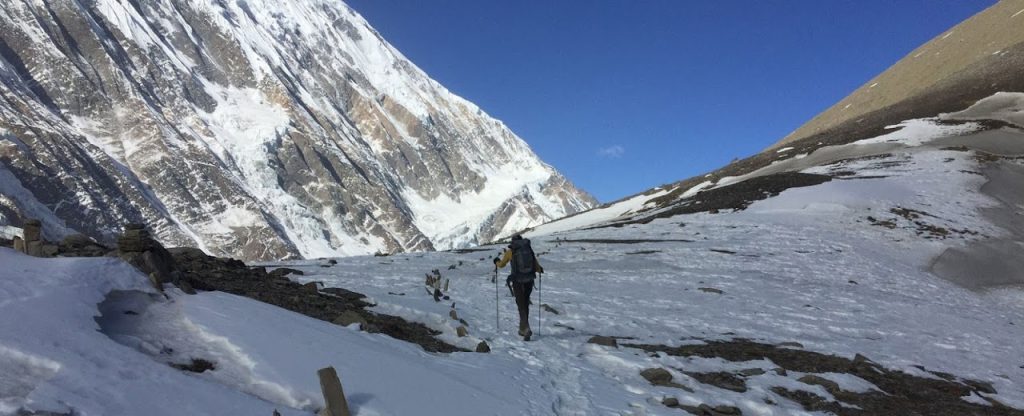
Helpful tips for the first time trekker in Nepal Here is some food for thought! Any passionate trekker would be motivated enough just thinking about completing a trek in the shadow of the world’s highest peaks; a bonus would be boasting about it afterwards. One doesn’t need to be a seasonal world traveller or an exceptional hiker. All you need is to be in good shape, love walking, and desire to learn about different cultures with an open mind and a sense of adventure, and this dream can become a reality. Having a sense of humour is a bonus. 1. Start easy. As exotic as a 16-day trek to Everest base camp sounds, take it easy if this is your first time making an extended hiking trip and travelling to a developing nation. We usually advise first-timers to take a shorter trek in the lower elevations, such as in the Annapurna region. However, it will be no less challenging with all the uphill and downhill walking but with a generous supply of oxygen. You will pass through extravagant villages and farms with grand mountain views making up for the physical effort. 2. Book with a tour company or go independent Opinions vary on this subject of – whether to do the trek with or without a guide. A tour company will save time even for the most independent of travellers. The right tour company can keep you from exasperation and give you peace of mind by taking care of all necessary arrangements in detail. A reputable tour operator should provide a perfect English-speaking guide and porter support. You will see many younger people trekking on their own with a guidebook – fantastic! However, with an excellent guide, not only will you gain new friends, but you will be able to facilitate logistics and little-known secrets of the area, adding value to your Himalayan hiking experience. More often than not, your guide is from the local area, if not a regular in that region, who knows the villagers quite likely to invite you for a cup of tea or even Rakshi – a local brew. You might be uncomfortable with having a porter to carry your belongings while you are just taking your day pack but keep in mind that you are helping to employ one more local with a relatively good income. You will be provided with a duffel bag before leaving for the trek, where you pack all your belongings for the trek you need. Porters usually walk ahead with your duffel bag, either meeting you when he is resting or at lunch or sometimes even at the end of the day’s hike. They often reach the lodge ahead as they have a faster pace. Some excellent porters come down on the trail after picking the best room in the hostel and even offer to carry your day pack until the lodge at the end of the day. 3. Trekking lodges. Depending on the region you are trekking in, the accommodation will vary from elementary tea houses. For example, in some Langtang and Helambu region villages, the lodges were destroyed by the April 2015 earthquake, and some are being reconstructed now. However, a growing number of comfortable family-run lodges and small chains of “Luxury” lodges are owned by more prominent companies. A traditional family-owned inn would have neat and clean rooms with a wooden framed bed, mattress, and shared toilets/bathrooms. You are advised to either bring your own or hire a sleeping bag. Although the lodges have blankets, some of them might be smelly or mouldy. During the peak season, the guides and porters use those blankets. They have quite an extended menu with a variety of hot food. Don’t expect the food to be the same as back home when you order macaroni and cheese. After a couple of days, you will notice that the menu is identical, but the taste will be different as they prepare food fresh and not packaged. Most trekkers gather in the dining room, and there is usually a heater. There are typically cloth lines on top of the heaters where you can hang your wet clothes to dry. It is a great place to read, play games, or meet other trekkers worldwide. Tip: You can lay your clothes on the mattress and under your sleeping bag to avoid wearing cold clothes in the morning. The types of packages vary between different local trekking agencies. However, your meals would be included if you booked with a reputable tour operator. On the other hand, if you are an independent trekker, you will notice the price of food getting more expensive the higher you get. This is because porters or mules carry everything up through rugged terrain. 4. Listen to your body. You are bound to feel the hike’s toughness regardless of your fitness level, as you are not trained for multi-day hikes. However, an excellent guide shouldn’t be too far away, and they should encourage you to stay hydrated and take it slow and steady with frequent stops to admire the scenery and people and rest. It is good to bring some snacks with you to keep the energy levels topped off before or after your lunch. 5. To buy or to rent. This advice is for non-regular hikers. You can buy cheap knock-off (fake) gear in the numerous “trekking shops” in Kathmandu and Pokhara. You will also be able to rent puffy-down jackets and sleeping bags for about US$1 per item per day. Hiring allows you to return the equipment after the trek you might never use again and gives you room in your suitcase/backpack for souvenirs. 6. Here’s a checklist of other miscellaneous items: Bring six (4) passport-sized photos to Nepal for your visa and trekking permits. Pack with light layers in mind Bring some Aqua tabs/water purifiers and your water bottle to have water on the cheap and avoid buying bottled water bottles. Instead, purchasing a Camelback is a good


